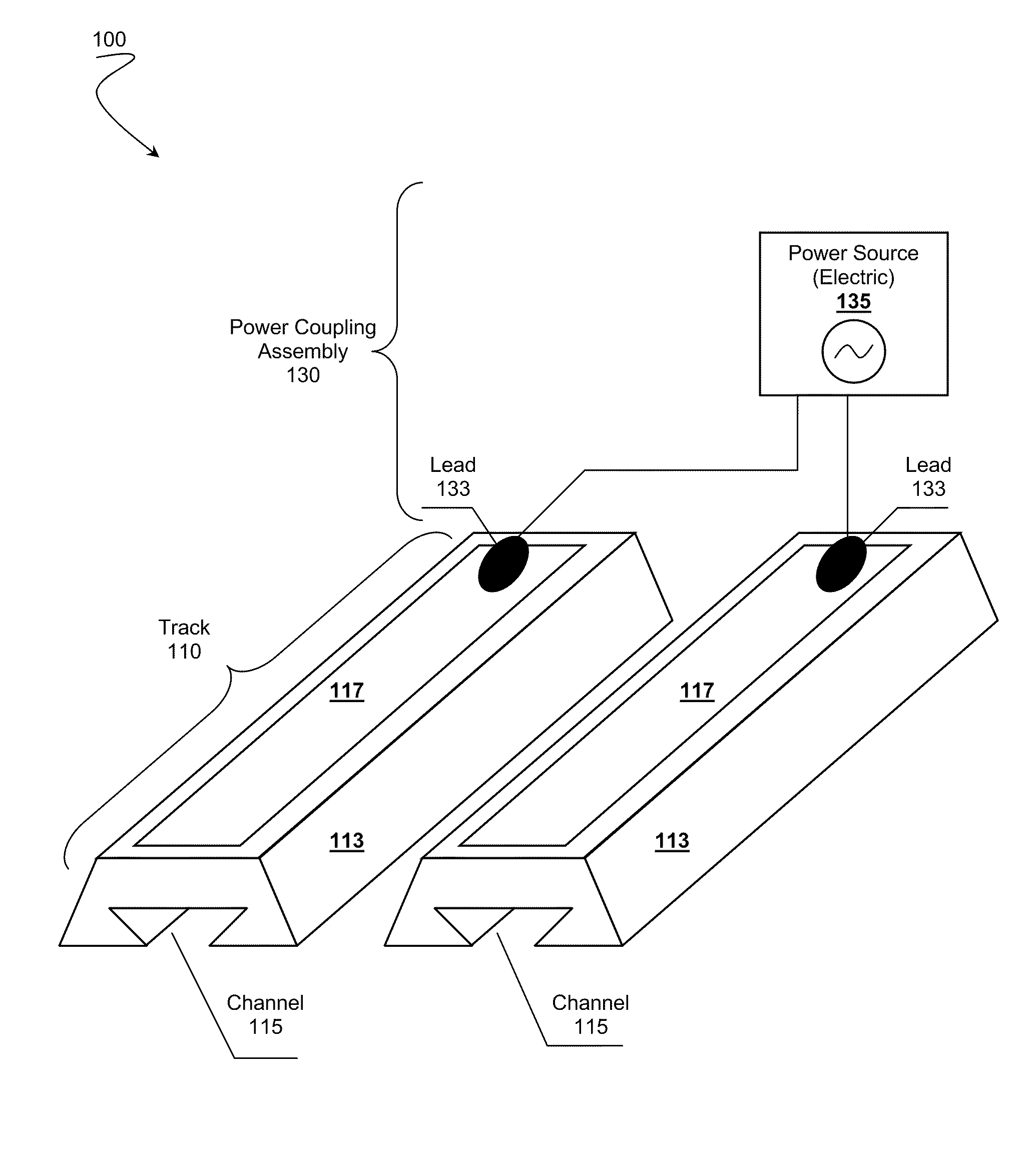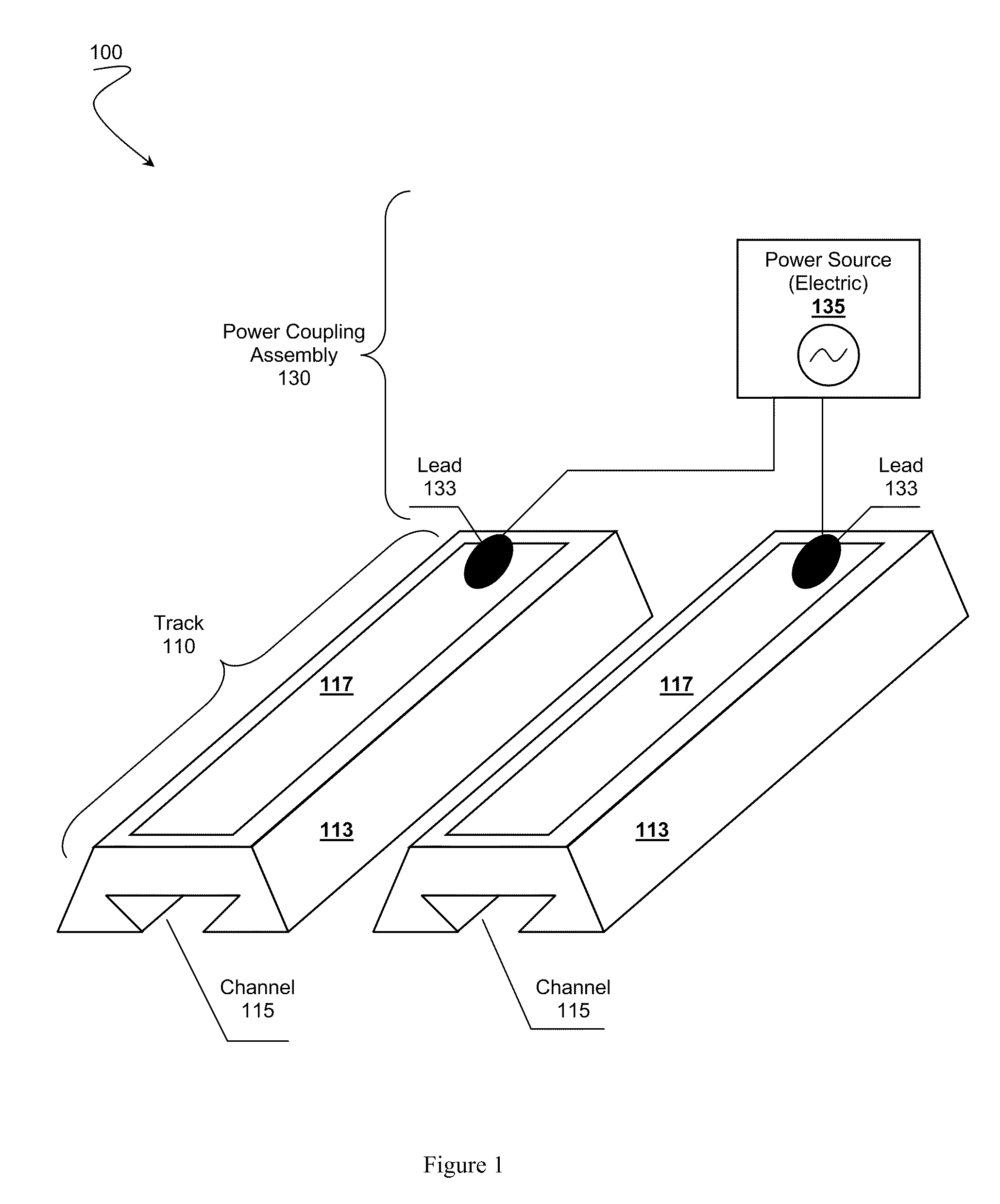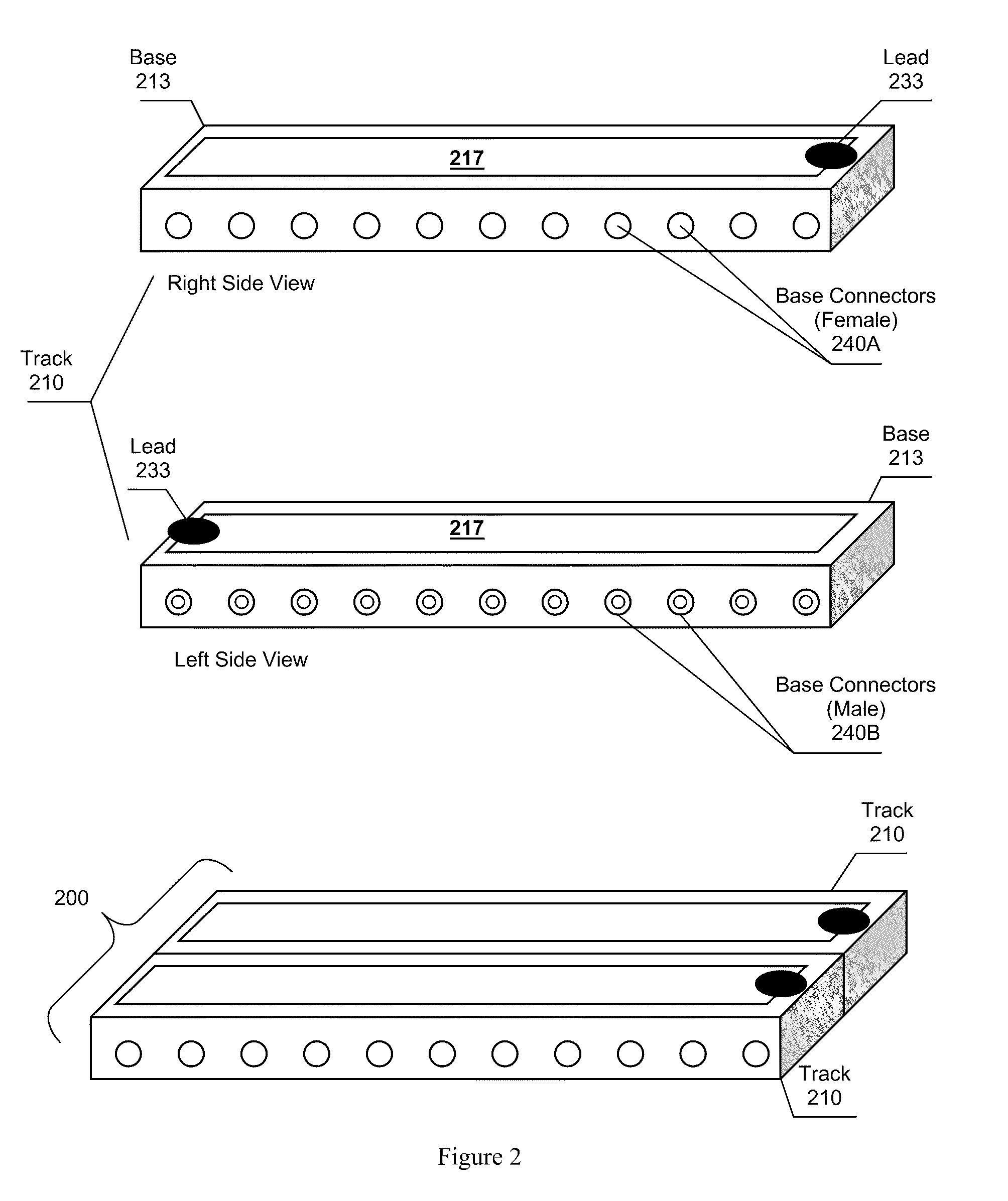Electric Pest Deterrent Tracks and Systems
a technology of electric pests and tracks, applied in the field of pest repelling technologies, can solve the problems of driving the pest away, receiving unpleasant electrical shocks, and not providing a sufficient deterrent from crawling creatures or birds
- Summary
- Abstract
- Description
- Claims
- Application Information
AI Technical Summary
Benefits of technology
Problems solved by technology
Method used
Image
Examples
Embodiment Construction
[0023]The following discussion presents one or more aspects of the inventive subject matter from a perspective of deterring birds. One should appreciate that the disclosed techniques can be readily adapted to target many different pests including insects, rodents, gastropods, birds of various sizes, large animals, or other pests.
[0024]In FIG. 1, system 100 provides a basic overview relating to features of an electrical deterrent system that comprises at least two of electric deterrent track 110 and power coupling assembly 130. System 100 can include a plurality of tracks 110 arranged according to various configurations. In the example shown, two of tracks 110 are arranged adjacent to each other on an installation surface (e.g., roof, building, boat, etc.).
[0025]Electrical deterrent tracks 110 can comprise a conducting strip 117 affixed to a top surface of insulator base 113. Strip 117 can be affixed through various suitable approaches including mechanical fasteners (e.g., staples, s...
PUM
 Login to View More
Login to View More Abstract
Description
Claims
Application Information
 Login to View More
Login to View More - R&D
- Intellectual Property
- Life Sciences
- Materials
- Tech Scout
- Unparalleled Data Quality
- Higher Quality Content
- 60% Fewer Hallucinations
Browse by: Latest US Patents, China's latest patents, Technical Efficacy Thesaurus, Application Domain, Technology Topic, Popular Technical Reports.
© 2025 PatSnap. All rights reserved.Legal|Privacy policy|Modern Slavery Act Transparency Statement|Sitemap|About US| Contact US: help@patsnap.com



